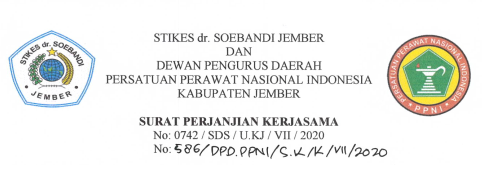The Effect of CPR Multimedia Learning to Willingness of Nursing Students On Conducting CPR
DOI:
https://doi.org/10.36858/jkds.v10i2.408Abstract
Introduction: Incidence of out-of-hospital cardiac arrest (OHCA) varies worldwide as does the survival rate. The willingness of bystander on performing CPR on OHCA victims is an important factor in improving survival rate. Objective: To analyze the effect of CPR multimedia learning to willingness of nursing students on conducting CPR. Methods: This research was a quasy experimental study with randomized subject, pretest-posttest without control group design. The number of respondents were 36 students of 6th semester of nursing student using purposive sampling technique. The data was collected using a willingness questionnaire. Location of this study was in STIKES dr. Soebandi Jember. Ethical approval has been obtained from the Health Research Ethics Committee at STIKES dr. Soebandi Jember. Results: The results showed that there were score differences of nursing students' willingness to perform CPR between before and after CPR multimedia learning (p=0.000). In the early stages before the CPR multimedia learning (pretest), the average respondent's willingness to reach 9.68 (4-5 questions answered yes) with the lowest score 8 and the highest score 14. After the CPR multimedia learning (posttest), the average respondent's willingness reached 14.13 (7-8 questions answered yes) with the lowest score of 12 and the highest score of 16. Conclusion: This study shows that CPR multimedia learning can increase the willingness of nursing students on conducting CPR.





